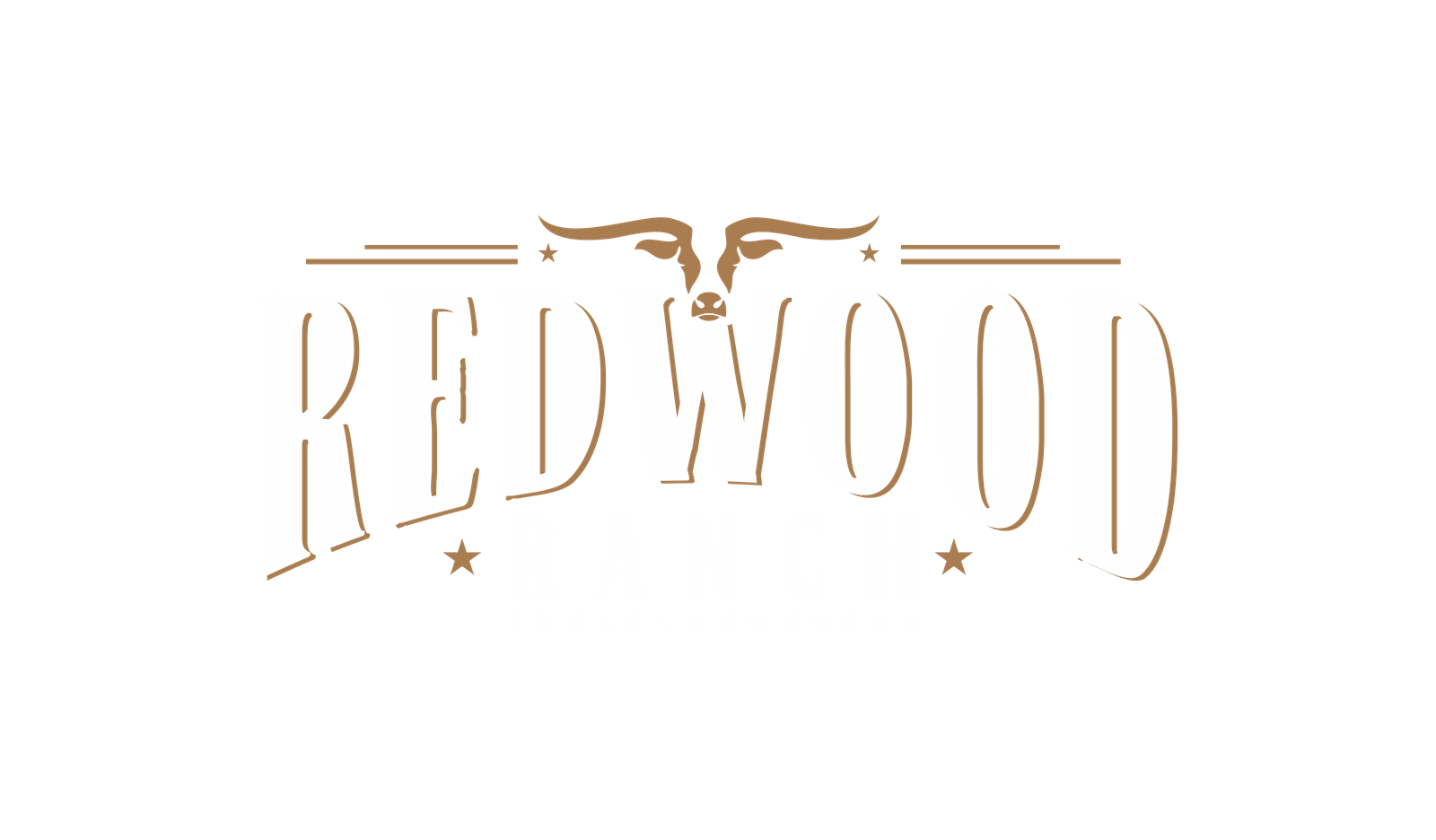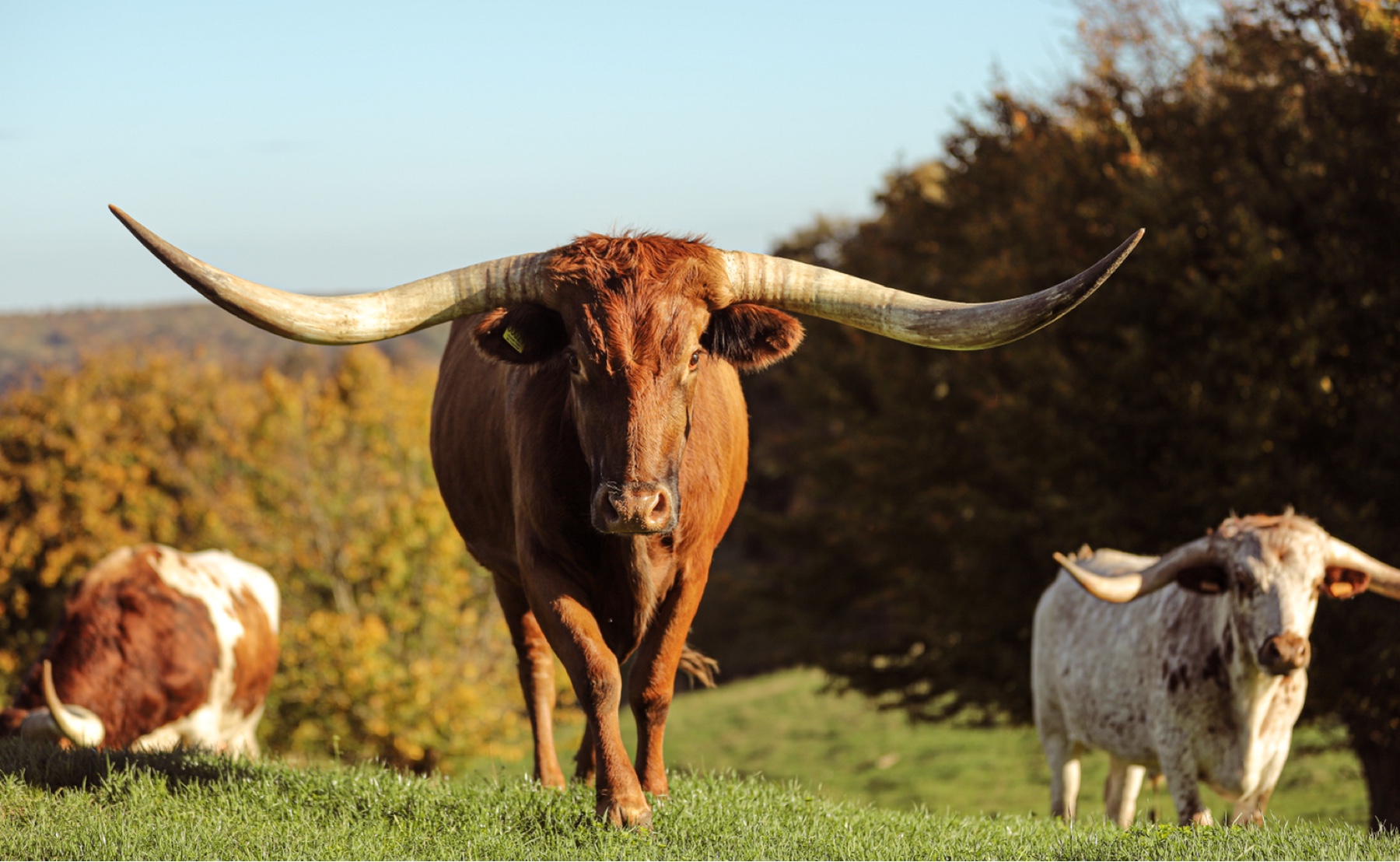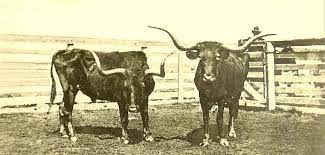


The cattle of the world, regardless of their wide and diverse body types and color patterns, are believed to originate from Bosindicus (the humped cattle of Asia) or Bos taurus (the wild cattle of Europe). Annals of history trace the movement of African cattle accompanying the Moors to Spain and their evolution into many cattle types. On the voyages of Christopher Columbus, the Spanish first brought long-horned cattle to the Americas in 1493. Descendants of these ocean voyagers were the first cattle population in North America.
The English, in colonizing North America, brought their native cattle in 1623, and as they moved west so did their cattle, pulling wagons and plows and providing milk. In 1821, cattle of North Carolina origin began to intermingle with the Spanish and English cattle. American Indians had developed their own strains of cattle from the Spanish and English strains.
Mexico, Texas, and what was then the Louisiana Purchase became the major blending pot for the evolution of this history-making Texas Longhorn breed of cattle. So old-timers contend the big horns, speckled colors and body types were derived from importation to the States out of the Longhorn Herefords of England. Others believe the blue and roan speckled stock reflected early Durham (shorthorn) introductions. The Spanish influence was represented by drab, earth tone colors.
Although "Mexican" cattle of the long horned variety provided the basic strain, historian J. Frank Dobie documented that an infiltration of cattle of mongrel American blood contributed to the evolution of the Texas Longhorn. Dobie estimated the Texas Longhorn evolved as 80% Spanish influence and 20% mongrel influence. Thus, the Texas Longhorn was created, imported to North America from many different routes, defined and refined by nature, tested by the crucible of time and the elements.

Through the mid-1800s, these range-rugged, big horned cattle multiplied without the help of man. Traits were genetically fixed, and as a result of survival of the fittest, resulted in ecologically adapted bovine families with extremely good heath, fertility, teeth, disease resistance, and soundness of body and limb. They multiplied by the millions. In 1876, an estimated 1000-head breeding herd was introduced into southern Alberta, Canada. By 1884, these cattle were estimated to have multiplied to 40,000 head with multiplication and importation.A national convention of cattlemen in St. Louis in 1884 made plans for a national cattle trail right-of-way from the Red River north to the Canadian border, but they were thwarted when Congress failed to pass the bill. After this, the great trail drives began to dwindle as deeded, fenced property and rapidly developing civilization cluttered the trails. In 1890, the United States Department of Agriculture estimated the nation's cattle population at 60 million head, mostly containing percentages of Texas Longhorn Blood.
In the early 20th Century, purebred cattle breeds from Europe and Asia became available to fit the desires of early ranchers. The foundation stock of introduced breeds such as Hereford, Shorthorn, and Angus were bred up to purebreds in this country from a native Longhorn base. Because of the great mothering ability of the Longhorn and the popularity of this "breeding up", pure Longhorn blood was practically bred out of existence.
By the dawn the 20th Century, candles, had been the chief source of light for nearly 2000 years. Tallow, the main ingredient in candles is obtained by rendering animal fat. Soaps, lubricants and cooking also required tallow. "Hide and Tallow" companies, as early beef processing plants were known, were a major industry in the early days of the industrial revolution. Meat was mostly an economic by-product. The demand for the tallow and hides was the driving force of the cattle business. Cattle genetics required selecting for the heaviest tallow-producing animals. It is no wonder that the naturally lean Longhorn, with 80% less renderable tallow than the English breeds was not in demand. As a result of this high percentage lean carcass, the Texas Longhorn came close to extinction.
By 1930, much open range was fenced, and southwestern cattle barons zeroed in on their favorite breeds of fat cattle. However, the historic Texas Longhorn was the time tested choice of some serious producers. Although later trading occurred between Longhorn producers, six unique strains were selectively perpetuated by private ranch families before 1931. Several early producers were instrumental in providing Longhorn genetics when the United States Government realized the near extinction of these creatures. The government herd, established in 1927 at the Wichita Mountains Wildlife Refuge, Cache, Oklahoma, was to become the seventh of the preserved Texas Longhorn families. These family genetics established in the early thirties and before are still maintained by family members and friends. Today producers of Texas Longhorns either raise their favorite family bloodline in a pure state or mix and select combinations of several family bloodlines.
created with
Joomla Page Builder .